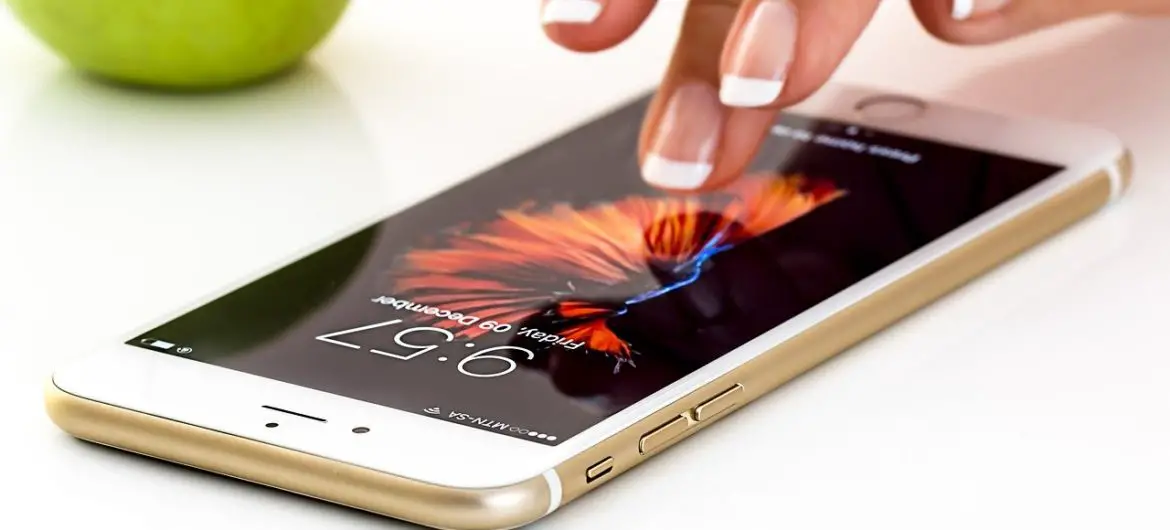The world we live in today is riddled with Sensors.
Whether it be in your smartphone, an aeroplane, street lights, your car and many other places.
Sensors are used in computing, as well as electrical and electronic systems. They are crucial in providing data from the real world to help the system make necessary changes.
They also help make these systems more efficient and accurate.
There are many different types of sensors, each with a particular set of skills, making them suited for different applications.
One of those types is the Proximity Sensor.
But, what are proximity sensors?
Proximity sensors help detect objects without the need of physical touch. They can detect the movement of an object, or the mere presence of it. Once they have detected an object, they can send this information to the brain (usually a microprocessor) of the system for further processing.
This is only the tip of the iceberg for proximity sensors. There are many different types, each suited for a different type of application.
So read on to learn more about proximity sensors.
Deeper look at sensors
Since the proximity sensor is a subcategory of the general term Sensor, it will help to learn a bit more about sensors.
But, if you aren’t too concerned with learning about sensors, you can skip this section and go to the next part which will cover everything about proximity sensors.
What is a sensor
Computing and electronic systems in the most simplest form consist of inputs, a processor and outputs.
Let’s consider a computer. It has inputs (mouse, keyboard), a processor (Central Processing Unit), and outputs (printer, speakers, monitor).
So what is a sensor?
A sensor is a type of input device whose main function is to ‘sense’ physical changes in the environment (real world) and provide this information to the processor of the system.
Us humans have our own sensors.
Five of them!
We have the ability to make sense of the environment around us through Touch, Smell, Sight, Taste and Sound.
Just like a computing system, we too also have a processor (our brain), and outputs (arms, legs).
So, imagine you are at a party and the DJ plays your favourite song.
You are able to sense the sound waves traversing the airwaves using one of those five senses (in this case sound through your ears).
This information is sent to your brain (processor) which realises this is your jam! It then informs your body(output) to move uncontrollably (or controllably depending on your dancing skills) to the beat of the song.
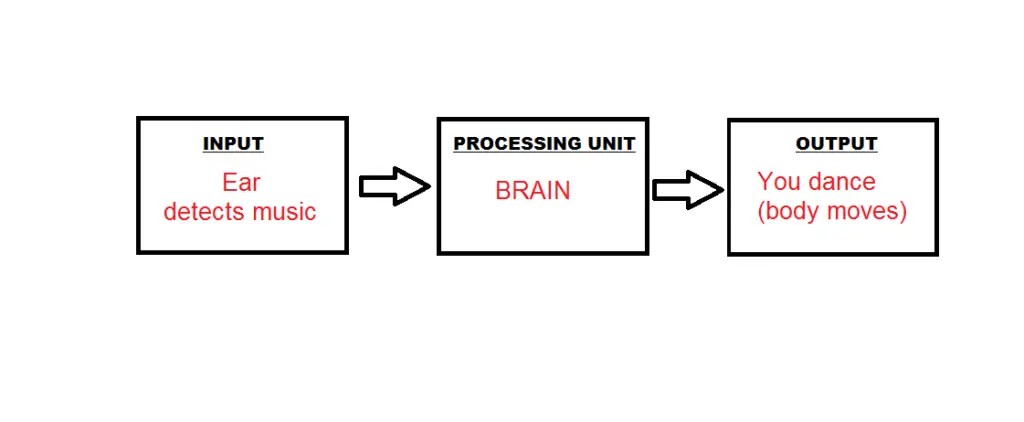
Sensors in computing and electronic systems work in the same manner.
They provide information from the world to the processor who can deal with that information as needed.
For example, let’s take a look at a fan heater.
This fan heater will have a temperature sensor which has the job to sense the ambient temperatures to ensure that the temperature you set is maintained.
If temperatures start to rise, the sensor will relay this information to the processor. The processor can then suspend heating until temperatures fall back to the levels you set.
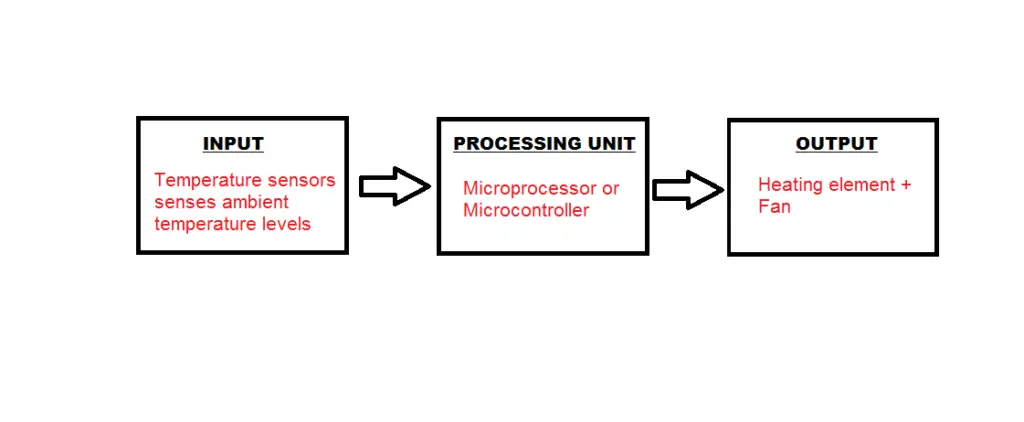
Why use sensors?
But, are sensors really that essential?
The simple answer is yes!
There are many benefits to using sensors in systems.
Let’s go back to the heater. If it did not have a sensor, the temperature would rise above the level you set making the room hotter than you would like.
Sensors provide a means of feedback so that changes can be made if needed.
Other advantages include;
- Making systems more efficient
- Predictive and preventative maintenance
- Increasing accuracy
What are proximity sensors?
Now that we know what role a sensor has in a computing or electronic system, we can take a closer look at Proximity Sensors.
Just like we have different sensors that have different roles, and function in different ways, the electronic world has many different types of sensors each with its own unique sensing ability.
There are sensors to detect temperature, smoke, gas, altitude, speed, acceleration, and many more.
What about a proximity sensor? What does it do?
Proximity sensors are a classification of sensors that have the ability to detect objects without the need of physically touching them.
However,you aren’t limited to only one type of proximity sensor to achieve this. There are a variety of technologies used such as light, sound, infrared, electromagnetic, and capacitive, in proximity sensors that give them the ability to detect objects.
We shall cover the different types of proximity sensors in the next section.
Different types of proximity sensors and their working principle
Now that we know the basic principle of a proximity sensor, let’s take a look at the different versions, and how each of them is able to detect objects with its own unique abilities.
Inductive proximity sensors
First on the list are Inductive Proximity Sensors.
This type of proximity sensor is able to detect objects based on the law of Induction. Due to this, they are limited to only sensing Metal Objects.
Inductive proximity sensors are further divided into two categories;
- Unshielded
- Shielded
The main difference between the two is their Sensing area.
This comes down to the electromagnetic field generated by the coil. In the Unshielded version of the sensor, the electromagnet field is not restricted, therefore it has a wide sensing area.
Whereas, in the Shielded version, the electromagnetic field is concentrated, reducing the sensing area more toward the front of the sensor.
Working principle of Inductive proximity sensors
Below are the main stages of operation for inductive proximity sensors;
- The coil generates a high-frequency electromagnetic field which originates from the coil located in the oscillation circuit
- This field sensing area is dependent on whether it is Shielded or Unshielded.
- Now, if a metal object enters this electromagnetic field, the metal object will be induced with a current known as an Eddy current due to electromagnetic induction.
- If the metal object gets closer to the sensor, the eddy current is going to increase.
- This means that the oscillation circuit whose job it is for generating the electromagnetic field is going to have a greater load on it to keep up with the increase in eddy current.
- A separate circuit inside the sensor is responsible for monitoring the load on the oscillation circuit and when it crosses a set threshold it will stop the oscillation circuit.
- This indicates the presence of an object.
Capacitive proximity sensors
Next up, we have Capacitive proximity sensors.
Objects are detected when their capacitance (and therefore a change in capacitance) is registered within the sensor.
Unlike inductive proximity sensors, this version is not limited to detecting only metals.
Metallic and non-metallic objects which range from liquids, metals, wood, plastic, etc, can be detected using capacitive proximity sensors.
The internal construction is very similar to a Capacitor.
As you might know a capacitor consists of two conducting plates, which are separated by something known as a Dielectric.
Similarly, the sensor consists of the two plates (electrodes) whose capacitance changes as an object moves toward it.
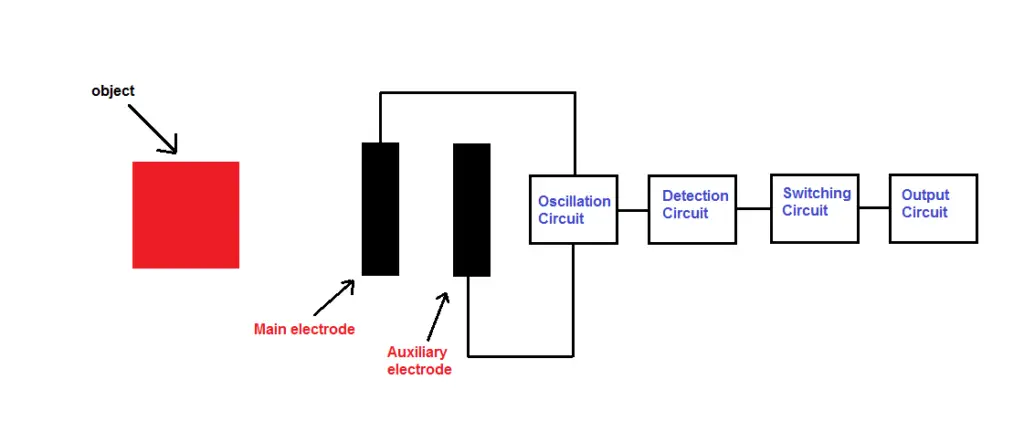
Working principle of capacitive proximity sensors
The working principle is very similar to an inductive proximity sensor.
As you just saw, the capacitive proximity sensor also has an oscillation and detection circuit. Below are the main stages of operation;
- The internal plate (electrode) is connected to an oscillation circuit which generates an electrostatic field.
- When an object enters the electrostatic field, the capacitance of the plates increases
- This increase causes a greater load on the oscillation circuit (just like with the inductive proximity sensor).
- The detection circuit ‘detects’ this increase and stops oscillation, thereby indicating the presence of an object.
Ultrasonic proximity sensors
The Ultrasonic proximity sensor detects objects by using sound.
Ultrasonic sound waves (hence the name), are used so they are not audible to humans (therefore you won’t hear anything if you are near these sensors).
A typical ultrasonic sensor is broken into two parts;
- Transmitter (generates the sound waves)
- Receiver (which captures the sound waves when it reflects back from an object)
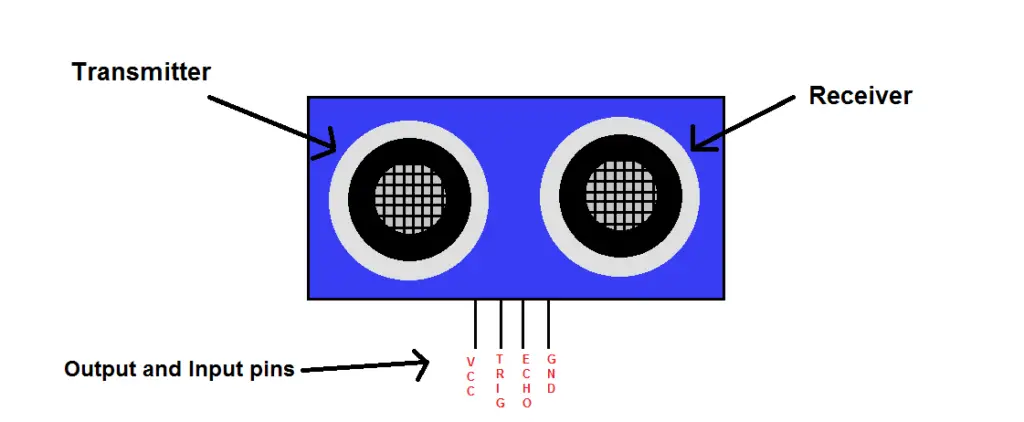
The great thing about this type of proximity sensor is that you can measure the distance of the object. This comes down to knowing the speed of the sound, and the time it takes for the wave to make a return trip.
Below is a fundamental equation to calculate speed, distance and time, which you might recall from science class;

Where V represents speed, d is distance and t is time.
Rearranging this equation to calculate distance we get;

We know that sound travels around 343 metres/second. So, to calculate the distance of an object we just need to acquire the time.
Note, the time value needs to be halved to calculate the distance of the object. This is because the time value the ultrasonic value will present to us, is the time it takes the sound wave to leave the transmitter, hit the object and return back to the transmitter.
We just need the time for the first part (which is the sound wave hitting the object) to calculate the distance of the object.
To do this, we can either halve the time value when calculating the distance, or halve the total distance value at the end.
Let’s look at an example to clear things up.
Say there is a wall about which you are trying to calculate how far away it is. The ultrasonic sensor gives you a time value of 0.005 seconds.
Option 1
Take the time value and divide it by 2. This now gives us a time value of 0.025 seconds. Now, use this value and the speed of sound (343 m/s), to calculate the distance. This gives us; Distance = 0.025 x 343 = 0.8575 meters.
Option 2
Use the initial value the ultrasonic proximity sensor gives us, calculate the distance and then divide it by 2. So, first calculate the distance; d = 0.005 x 343 = 1.715 meters. Now, take this value and halve it; 1.715 / 2 = 0.8575 meters.
So, using either option will yield the same result.
Another important note is to make sure you are using the same units in your calculations. If you are calculating for meters per second, ensure your time values are in seconds and not milliseconds.
Working principle of ultrasonic proximity sensors
Below are steps of operation for ultrasonic proximity sensors;
- Transmitter emits an ultrasonic wave
- Wave traverses through the air
- The wave encounters an object hits it thus causing it to reflect back toward the ultrasonic sensor
- Receiver ‘receives’ the reflected wave
Infrared proximity sensors
While ultrasonic sensors use sound to detect objects, Infrared Proximity Sensors (or IR sensors) use infrared light.
The infrared sensor works in many ways like its ultrasonic counterpart. Just like the sound waves are inaudible to the human ear, the infrared light is invisible to the naked eye as its wavelength is longer than visible light.
If an object is able to give off heat, it will also give off infrared radiation.
This type sensor comes in two varieties;
- Active
- Passive
Active Infrared Sensors have the capacity not only to detect IR radiation, but to produce their own IR radiation.
An active IR sensor consists of two parts; a Infrared Light-Emitting-Diode (LED), and a Receiver.
They are commonly used in robotics for obstacle detection.
Passive Infrared Sensors on the other hand can only detect IR radiation and have no means of producing it.
A passive IR sensor consists of the following parts;
- Two strips of a pyroelectric material
- An infrared filter (only lets in IR light)
- Fresnel lens (which takes in light an concentrates at a particular point)
Working principle of infrared proximity sensors
Active Infrared Proximity sensor
- The IR LED emits a beam of infrared light
- That beam hits an object and is reflected back toward the sensor
- The receiver then receives the reflected beam
- The relative distance of the object is then calculated
Passive Infrared Proximity sensor
- The sensor will have a particular sensing field of view, as well as sensitivity to IR levels (which you should be able to change as you desire)
- When an object, person, animal, etc (that gives off IR radiation) enters the field of view, and has an IR reading above the threshold of the sensor’s IR level, a signal is then sent to the processor within the IR sensor indicating an object is present.
Photoelectric proximity sensors
Next up are Photoelectric Proximity Sensors.
This type of sensor also uses light as its means of detecting objects. However, Infrared light is only used some of the time and is not necessarily the only type of light source used.
The basic functionality of light being transmitted and reflected back to detect objects is the same.
But, when it comes to photoelectric proximity sensors, there are three varieties;
- Reflective
- Through beam
- Diffuse
Working principle of Photoelectric proximity sensors
Reflective Photoelectric proximity sensors
- A light beam is emitted from the transmitter
- That light beam bounces off a reflector and back to a detector
- If the light beam is able to reflect back with no interruption, this means there is not object present
- However, if the beam does not return to the transmitter, this indicates the presence of an object
Through beam Photoelectric proximity sensors
- This setup of the sensor consists of two separate modules that are not part of the same housing; an Emitter and a Receiver
- The two modules are set up at some distance apart (but maintaining a direct line of sight between the emitter and receiver modules)
- The emitter emits a light beam to the receiver
- Under normal conditions, the light beam is unbroken
- If the beam is broken, it means there is a presence of an object or person
Diffuser Photoelectric proximity sensors
- Instead of the light reflecting of a reflector (like with the reflective photoelectric sensor), the object being detected acts as the reflector
- Emitter emits beam of light
- Light bounces of object and returns back to receiver
- Presence of object detected
Magnetic proximity sensors
Last, but not least, is the Magnetic Proximity Sensor.
This type of sensor is used to detect magnetic objects (things like permanent magnets and electromagnets).
As you know, all magnetic objects are surrounded by a magnetic field. The sensor has technology which is able to detect this magnetic field.
Here are different ways (or principles) that a magnetic proximity sensor might use to detect the presence of a magnetic field;
- Reed switch
- Variable reluctance
- Magneto resistive
- Hall-effect
There are a couple of key characteristics of magnetic sensors; Rated operating distance and Repeatability.
Rated operating distance is the distance at which the magnetic sensor gets tripped (senses a magnetic field).
Repeatability is the distance at which the sensor starts to repeatedly switch.
Working principle of magnetic proximity sensors
Below are the working principles of the different types of proximity sensor.
Variable reluctance magnetic proximity sensor
- It is made up of a permanent magnet and a ferromagnetic pole surrounded by a coil of wire.
- When a magnetic material passes the tip of the ferromagnetic pole, an analog voltage is induced within the sensor
- This voltage is sent to a control unit and converted to a digital signal for further processing
Magneto resistive proximity sensor
- Has something known as a Measuring Cell which consists of resistors with miniscule ferromagnetic and non-magnetic layers
- Two of the resistors form what is known as a Wheatstone bridge circuit.
- When a magnetic field is present, the wheatstone bridge produces a larger signal proportional to the magnetic field.
- A threshold value is defined and a comparator is used to switch the output signal.
Reed switch magnetic proximity sensor
- Is a type of switch (hence the name), that is magnetically actuated.
- Made up of two ferromagnetic reeds (or contact blades), housed in a glass capsule
- In the presence of a magnetic field, the contacts close.
Hall-Effect magnetic proximity sensor
- Consist of a Semiconducting material (like Silicon).
- When placed in a magnetic field, the voltage changes depending on the strength of the magnetic field.
Which is best proximity sensors
Phew!
That was quite a list wasn’t it? If you weren’t aware that so many types of proximity sensors existed, now you do!
You might be on the hunt for a proximity sensor yourself, or you might just be curious as to know which is the best proximity sensor?
Well that question really comes down to the application and the needs of the application it will be used for. So, let’s take a look at the advantages and disadvantages of each type of proximity sensor.
Inductive proximity sensors
Advantages
- Detection without the need for contact
- Resistant to most environmental factors such as dust and dirt
- Can sense a wide range of metals
- Cheap
- Longer lifespan due to no moving parts
Disadvantages
- Limited to a small distance it can sense objects
- Can only detect objects that are metal
- Performance can be affected by certain temperatures
Capacitive proximity sensors
Advantages
- Can detect a wide variety of materials (not limited to metals)
- Able to detect objects through non-metallic walls
- Has sensitivity control via a potentiometer (able to control for which materials you want to sense)
- Long lifespan due to no moving parts
Disadvantages
- Low sensing range
- Can be on the expensive side
Ultrasonic proximity sensors
Advantages
- Color and transparency of object does not affect detection
- Works well in extreme conditions
- Can be used in the dark
- Not affected by light sources
- Low current consumption
- Able to give distance measurements to the nearest centimeter/inch
Disadvantages
- Cannot be used in a vacuum
- Cannot detect soft surfaces such as fabrics, or surfaces with severe imperfections
Infrared proximity sensors
Advantages
- Can be used anytime of the day
- Secured communication via line of sight
- Can measure distance of soft objects
Disadvantages
- Other sources of infrared light (like the sun) can affect the sensor’s readings
- Performance deteriorates over longer distances
- Passive infrared sensors can only detect objects that give off their own IR.
Photoelectric proximity sensors
Advantages
- Can sense a wide range of materials
- Long lifespan
- Long sensing range
- Fast response time
Disadvantages
- Can get contaminated over time
- Color of object can affect the sensing range
- Installation of through beam versions of the sensor can be quite complex
Magnetic proximity sensors
Advantages
- Small packages
- Large sensing range
- Long operating periods and low power consumption
- Low cost
Disadvantages
- Limited to only detecting magnetic materials
- Reed switch versions have lower lifespan due to moving parts
Common applications of proximity sensors
As mentioned at the start, sensors can be found everywhere. They are part of your daily lives helping make it more efficient and accurate.
The proximity sensor is one of those sensors helping to enrich our lives.
With the different types of proximity sensor available, and each having its own ability for specific purposes, it has many uses for many different applications.
Below is a list of the general applications that the range of proximity sensors covered above can be used in;
- Object detection, positioning, inspection and counting in automated production lines in manufacturing companies
- Capacitive touch switches on consumer electronic products like smartphones, keypads etc
- Collision detection for robots
- Washrooms; to turn taps/faucets, as well as hand dryers on and off without the need for contact
- Unmanned vehicles; Self driving cars, and planes
- Passive infrared sensors used in security systems in businesses and homes
- Detection of fluid levels, composition and pressure (using capacitive proximity sensors)
- Wind speed and direction on Anemometers (Ultrasonic)
- Parking sensors in automobiles

